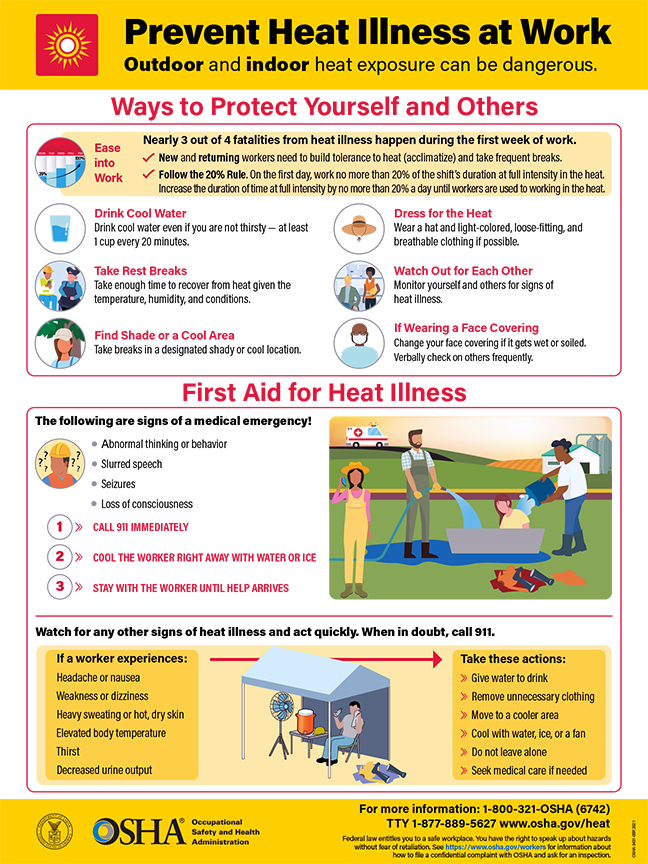Weather forecasters are calling for a massive “heat dome” to settle over the northeast U.S. this week with daily highs over 90 degrees and high humidity. This is a dangerous time for such conditions, especially because many farm employees have not yet acclimated to high temperatures, making them more susceptible to heat illness. Several factors can contribute to heat risk, including: the environment, physical activity, clothing or protective gear, and individual health status or risk. Employers are responsible for protecting workers from heat in the workplace as it is a known safety and health hazard.
Prevention
Of course, the best way to deal with heat illness is through prevention, that means: water, rest, and shade. OSHA recommends one, eight ounce cup of water every 20 minutes for people working in the heat for short periods of time, even if they don’t feel thirst. For longer periods of work outdoors they recommend adding sports drinks to help replace salt and electrolytes. Frequent breaks in the shade are also critical to dealing with heat. Warmer break locations require longer breaks, while cooler break locations allow shorter breaks. Another important measure is to provide training to all workers.
Heat Illness Recognition and First Aid
There are a variety of symptoms that can indicate heat illness, such as fatigue, irritability, thirst, nausea, and elevated body temperature. Even worse symptoms would include confusion, slurred speech, unconsciousness, and seizures. It’s important to train workers and supervisors to recognize these symptoms and be actively looking out for all employees. First aid measures generally include cooling the worker using shade, drinking water, air conditioning, cold towels, ice baths, etc. It’s important to monitor an affected person closely and call 911 for emergency help if needed.
Resources
OSHA provides a variety of heat illness resources, including an employer checklist. Another tool to consider is the OSHA-NIOSH Heat Safety App, this app for your phone will give you updated information about the current hazard levels in your area from temperature and humidity. A particularly useful resource set is the “Heat Illness Signs and Symptoms Infographic” in English and Español, also shown below.
By Richard Stup, Cornell University. Permission granted to repost, quote, and reprint with author attribution. The post Beat the Heat this Week! appeared in The Ag Workforce Journal.




